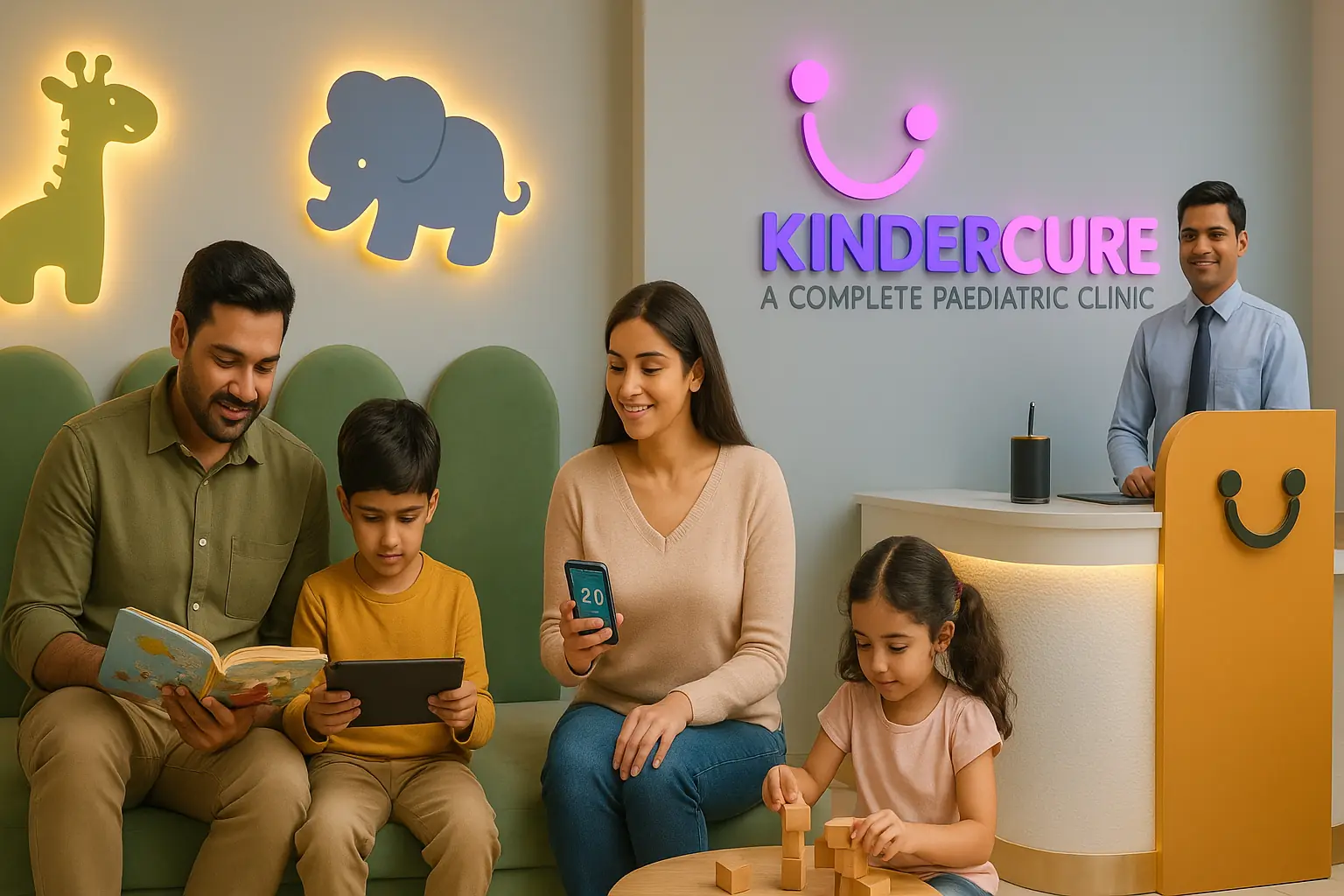Managing Screen Time for Healthy Minds: A Parent’s Guide

Managing Screen Time for Healthy Minds: A Parent’s Guide
Balancing Digital Exposure to Foster Growth and Well-being in Children
In today’s digital world, children are exposed to screens from a very young age. According to a report by Common Sense Media, children under the age of eight are spending an average of over two hours a day in front of screens. This startling statistic highlights the urgent need for parents to manage screen time effectively. We explore this topic in detail in this blog post by KinderCure.
The Impact of Screen Time: What the Statistics Say
Studies have shown that excessive screen time can lead to various health issues in children, including obesity, sleep problems, and behavioural issues. For instance, a study published in The Lancet Child & Adolescent Health found that children who spent more than two hours a day on screens had lower cognitive abilities [2]. Another study linked higher screen time to an increased risk of obesity in children [3]. These findings underscore the importance of setting boundaries around screen use.
Recommended Screen Time Guidelines
The American Academy of Pediatrics (AAP) provides guidelines for screen time:
- For children younger than 18 months, avoid the use of screen media other than video chatting.
- Parents of children 18 to 24 months who want to introduce digital media should choose high-quality programming/apps and use them together with children to help them understand what they’re seeing.
- For children aged 2 to 5 years, limit screen use to 1 hour per day of high-quality programs, co-viewing with parents.
- For children 6 years and older, establish consistent limits on the time spent using media and the types of media.
Strategies for Managing Screen Time
- Create a Family Media Plan: Establish clear rules for screen time, including what types of media are appropriate and when screens are allowed. This plan should be tailored to each child’s age, maturity level, and family values.
- Encourage Active Participation: Instead of passive consumption, encourage children to use screens for creative activities like drawing, coding, or learning a new skill.
- Set Screen-Free Zones: Designate certain areas of the home, such as bedrooms and dining areas, as screen-free zones to encourage family interaction and healthy sleep habits.
- Be a Role Model: Children learn by example. Limit your own screen time and demonstrate healthy digital habits.
- Promote Alternative Activities: Encourage physical play, outdoor activities, reading, and hobbies that don’t involve screens.
- Co-View and Co-Play: Engage with your children during screen time. Discuss the content, ask questions, and use the opportunity for learning and bonding.
- Use Parental Controls: Utilise tools and apps that help monitor and limit screen time, ensuring children access age-appropriate content.
Real-Life Application: A Case Study
Meet the Sharma family, who implemented a family media plan after noticing their 8-year-old son, Aryan, was spending excessive time on his tablet. They established screen-free zones in the house and set a daily screen time limit of one hour. They also introduced ‘Tech-Free Tuesdays’, where the entire family engaged in board games and outdoor activities. Over time, Aryan showed improved sleep patterns and became more involved in physical activities. “It was challenging at first, but seeing the positive changes in Aryan’s behaviour made it all worth it,” shares Mrs. Sharma.
The Importance of Balance
“In the digital era, screens are a part of our children’s lives, but balance is key. It’s about ensuring that screen time doesn’t replace crucial activities like physical play, reading, and family time. As parents, we must guide our children to use technology as a tool for learning and growth, not as a substitute for real-world experiences.” – Dr. Garima Mengi, [KinderCure](/ "Home"/)
At KinderCure, our developmental assessment services include evaluating how screen time impacts your child's cognitive and social development, helping parents make informed decisions about digital media use.
Conclusion: Fostering Healthy Digital Habits
Managing screen time is not about eliminating technology but about finding a healthy balance. By setting clear guidelines, engaging with your children, and promoting a variety of activities, you can ensure that screen time contributes positively to your child’s development. Share your experiences and tips for managing screen time in the comments below!
References
[1] Common Sense Media. (2017). The Common Sense Census: Media Use by Kids Age Zero to Eight. Link
[2] Walsh, J. J., Barnes, J. D., Cameron, J. D., Goldfield, G. S., Chaput, J. P., Gunnell, K. E., … & Tremblay, M. S. (2018). Associations between 24 hour movement behaviours and global cognition in US children: a cross-sectional observational study. The Lancet Child & Adolescent Health, 2(11), 783-791. Link
[3] Hinkley, T., Verbestel, V., Ahrens, W., Lissner, L., Molnár, D., Moreno, L. A., … & De Bourdeaudhuij, I. (2014). Early childhood electronic media use as a predictor of poorer well-being: a prospective cohort study. JAMA Pediatrics, 168(5), 485-492. Link
